Rolling down the Murray River
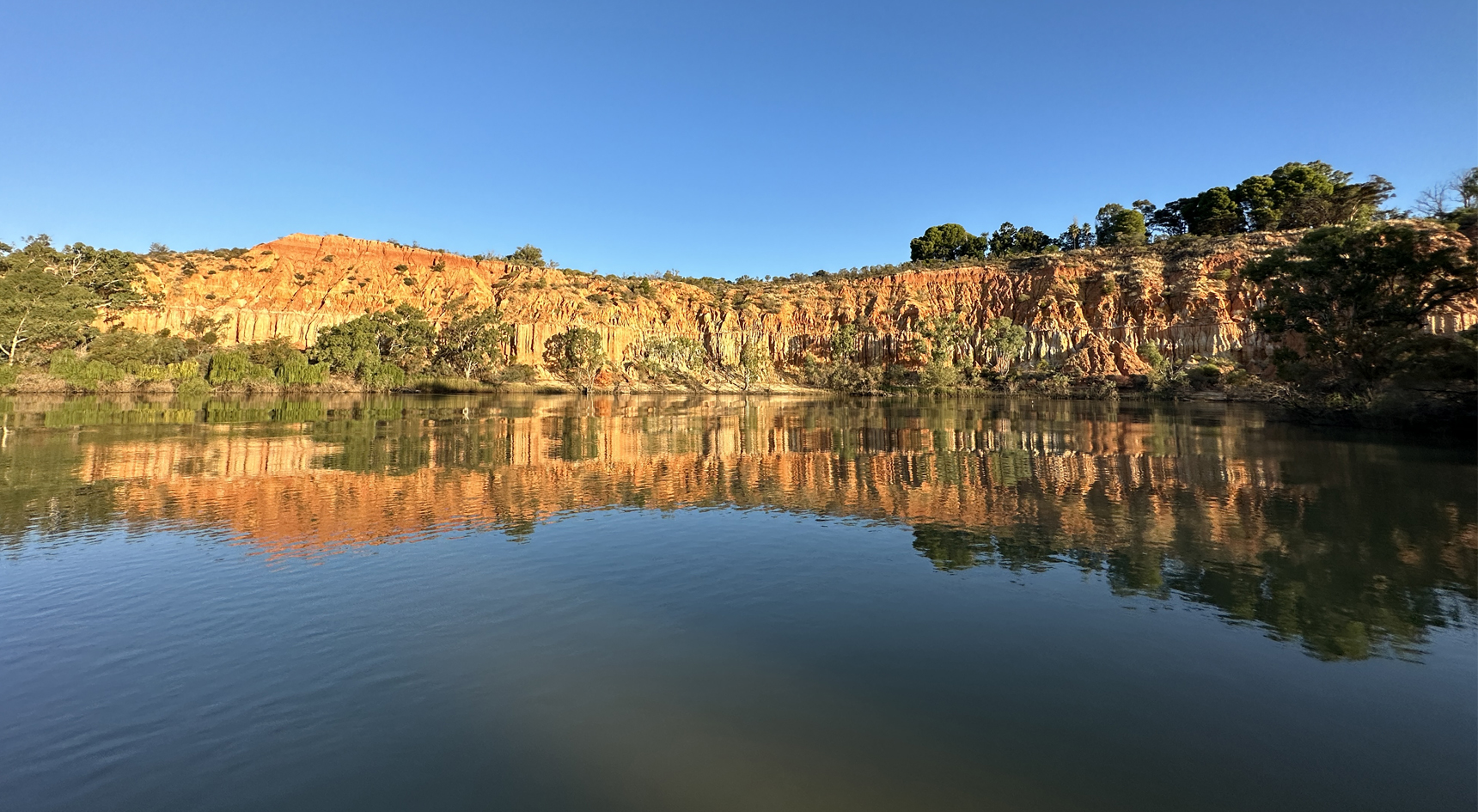
The Murray River is refreshed and a new generation of wildlife flocks to its banks. The slowly receding waters are re-sculpting the floodplains into a renewed tapestry of seedlings and birdsong.
The river
I sink, ankle deep, into the baked, banked up sand. Sulphur-crested cockatoos tear at the air, strobe-lighting the tree-filtered shards of late afternoon sunlight that turn Headings Cliffs into an incandescent orange. Sliding into the cool flow of the Murray, I comfortably swim against the current to absorb the magical canvas.
I’m on the five-day Safari to River’s End journey with Murray River Trails. Brand-new High River – a luxury solar-powered houseboat complete with five ensuite bedrooms and spa deck – is my home for two nights. It’s where fine dining takes place, celebrating the Riverland’s world-renowned produce and wines.
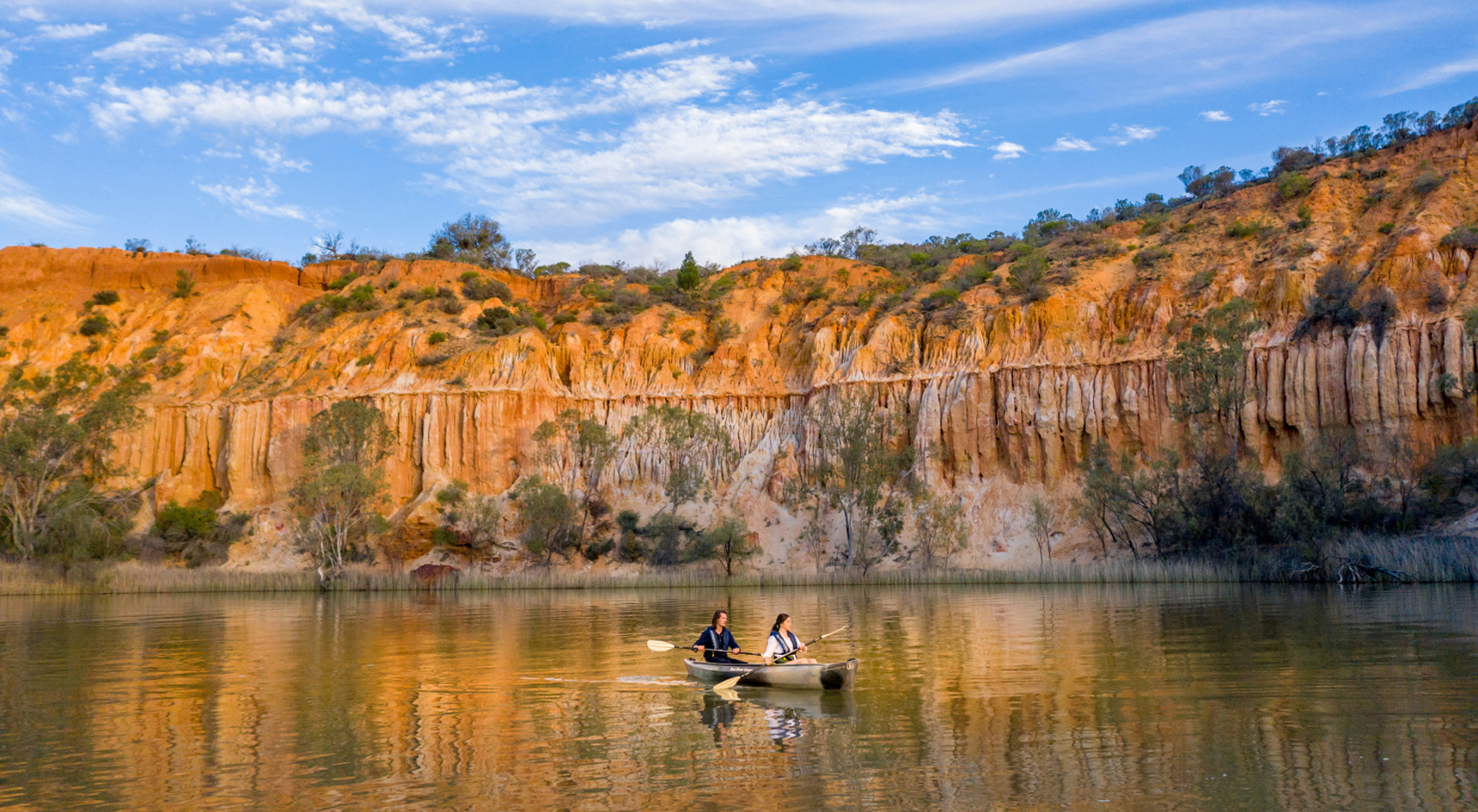
Guide Cathy leads us through a mature river red gum forest, which is home to a First Nations ring tree. “After seeing the river struggling for so long, and the land so crisp [and] dry, it’s a pretty spiritual thing to witness it come back to life, with new growth attracting many birds,” Cathy says. Below the flitting Gilbert’s and rufous whistlers, we gaze into curtains of orb weavers constructing their architecturally spun real estate.
Paddle power
The coming days are filled with quintessential Murray River life. We paddle with Mick from Canoe the Riverland, who has us neck-bent at colossal cliffs. Tree canopies fleck with flocks of royal and yellow-billed spoonbills while model-like Australasian darters stand solo on overwater branches.
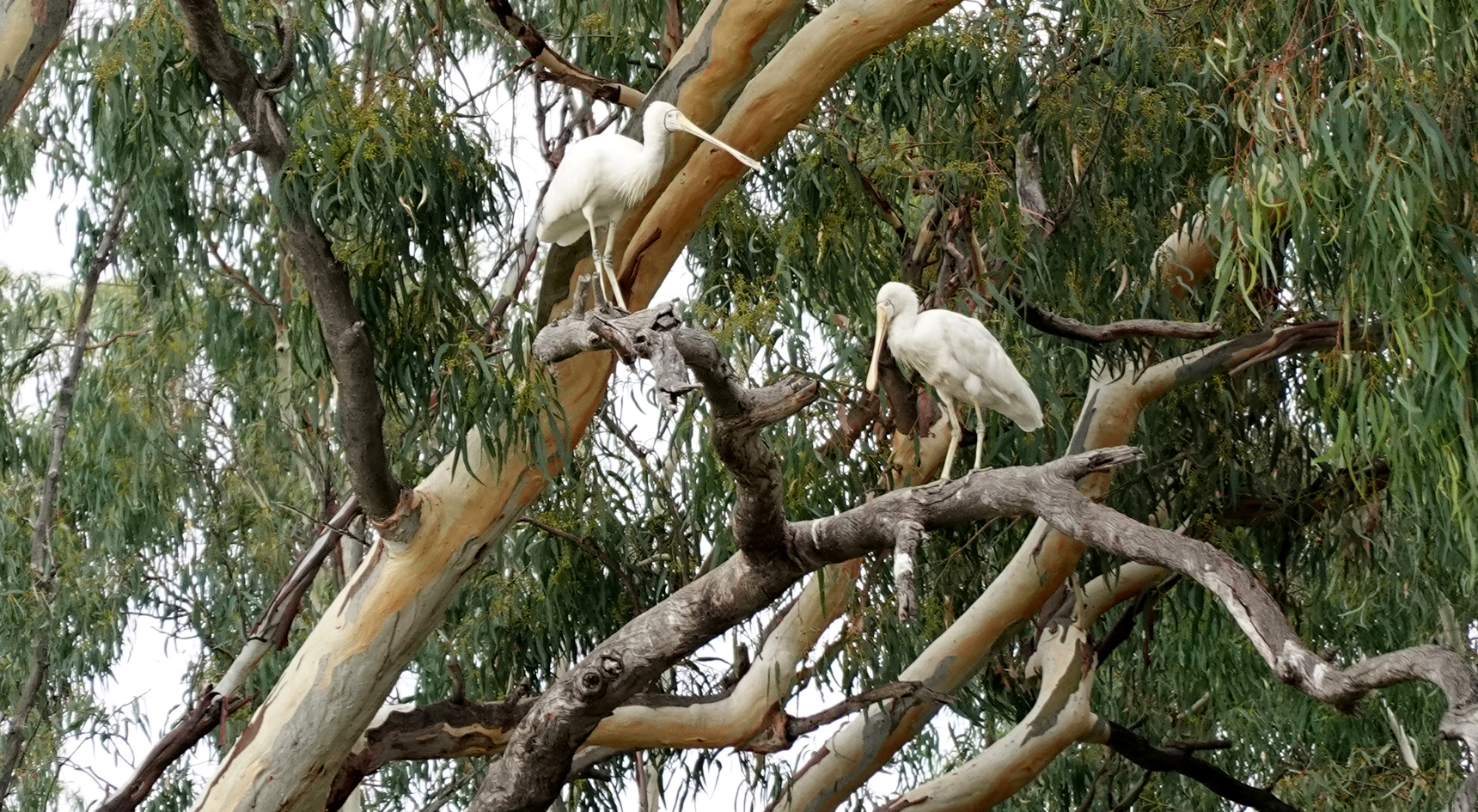
A stroll through Woolenook, near the banks of the Murray, reveals a sea of seeds that will begin to sprout in a few weeks’ time.
“We waded waist-deep here in January just as we did as kids during periods of flood,” Cathy says.
Flood markers on the trees are at head height, but the ground now sits dry like a giant baked chocolate brownie. Captured within its tessellated cracks are seeds that will soon be a newborn box tree forest, attracting inhabitants. “I recently spotted a red-backed kingfisher with a white chest,” Cathy says. “I had never seen one before, and I grew up on the Murray River!”
The Riverland Ramsar Site
With local guide, Dan, we explore the Riverland Ramsar Site surrounding Chowilla Station to view quenched ephemeral Lakes Littra and Limbra, today filled with migratory waders. Through Cathy’s telescope we observe straw-necked ibis, white-necked herons, pipers, grebes, banded stilts and teal ducks, and a swamp harrier hovering above.
Reaching a mudflat pocked with yabby holes and a track left by the tail of a turtle, we find at the now-dry flood line, fresh green shoots. I crouch down to a six-inch river red gum sapling. I will be long gone when it reaches adulthood.
Dan, who is also a snake handler, is a man with stories to tell.
Yeah, I’ve been bitten by snakes four times. Twice in WA during geological mapping,” he says casually.
“But my favourite thing to do is to come out of a night and hang my hammock between two trees. Our eastern and king browns are in good numbers now, with a few red-bellied blacks,” he says with genuine joy.
“They found three more species of frog at Chowilla after the floods, plus a new species of snake – a breeding pair of mud adders,” Dan says. “They were on the endangered list here (mainly found in Victoria). It brought SA’s venomous snake numbers up to 37.”
The Murray down south
Over the next two days, we explore the Murray’s southern end. Driving south with Chris in his Creek Cruiser van, we call in at the Ngaut Ngaut Aboriginal Site. Welcomed by Ivy Campbell and Sam Stewart, they lead a smoking ceremony and presentation on the Nganguraku, Ngaiawang and Ngarkat people. We see artworks, carvings and tools used for catching, preparing and cooking the bounty of food provided by the Murray.
Ivy is delighted that the river is once again flowing. Looking out across the waterways, she points. “Those waterholes are our lungs, those creeks are our veins,” she says. “Our river is our bloodstream. It’s our spiritual place.”
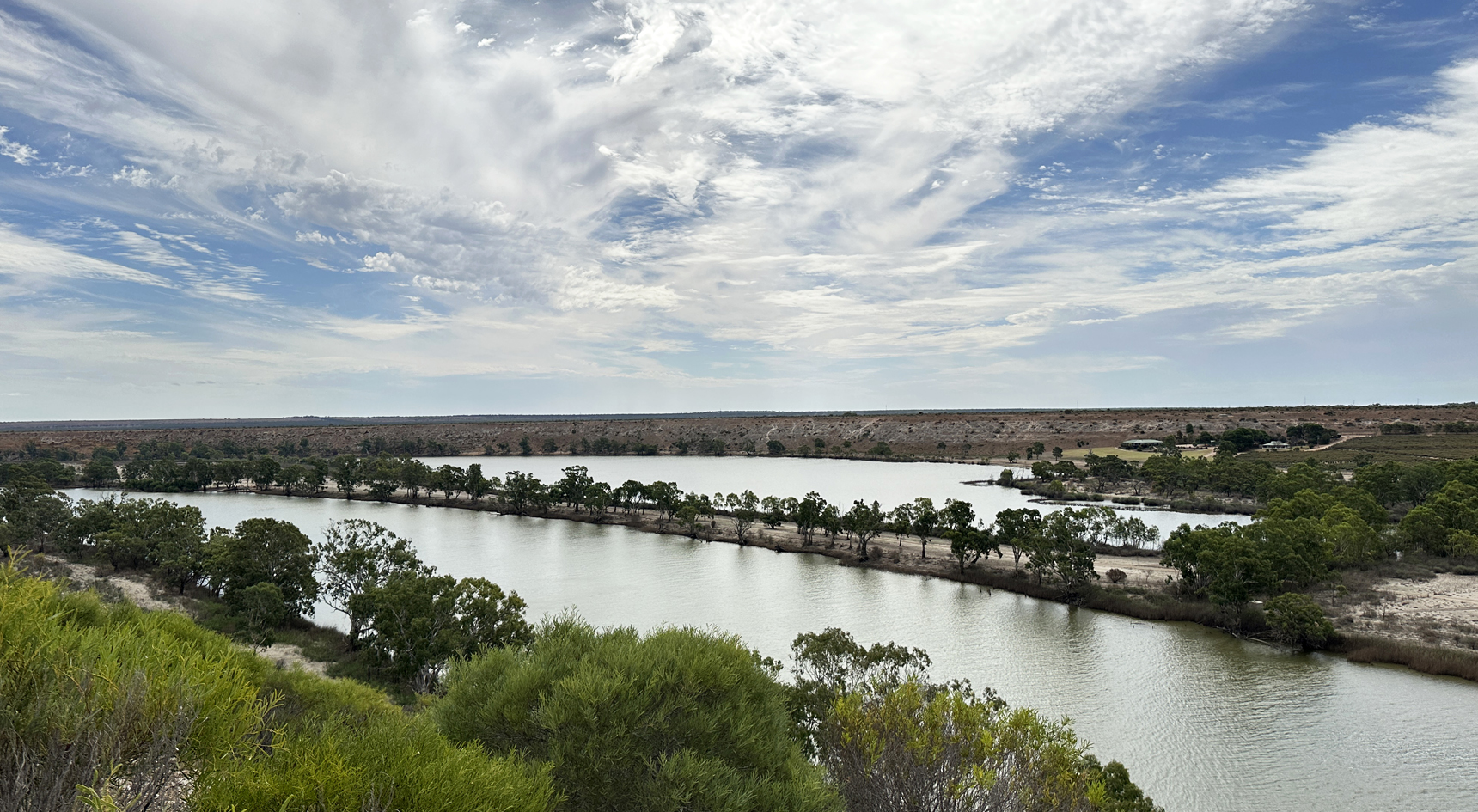
Reaching Goolwa, we join Leon Mead from Canoe the Coorong, who narrates the Dreamtime story of Ngurunderi – the spiritual leader of the Ngarrindjeri people. Gliding through this deliriously beautiful Ramsar Site, we learn how First Nations people lived on Coorong fish, berries and emu. Exploring the sand dunes, we taste salt-tolerant samphire, native cherries and the fruit of pigface before Leon sizzles fresh sweep fish on his camping stove. The untouched wilderness is a panorama of flapping pelicans, landing terns, spearing cormorants and red-necked avocets all breeding and feeding on pristine sand bars.
The river’s end
River’s End Retreat is our final stop on this sensory trip. From the charming 1854-built property’s doorstep, fourth-generation owner Jamie Bishop welcomes us, holding a wok. Within minutes, fresh Goolwa pipis cooked in butter, garlic and onion on the fire pit are slurped and savoured. An evening meal of Coorong mullet and mulloway follows in the large light-filled dining room overlooking Hindmarsh Island.
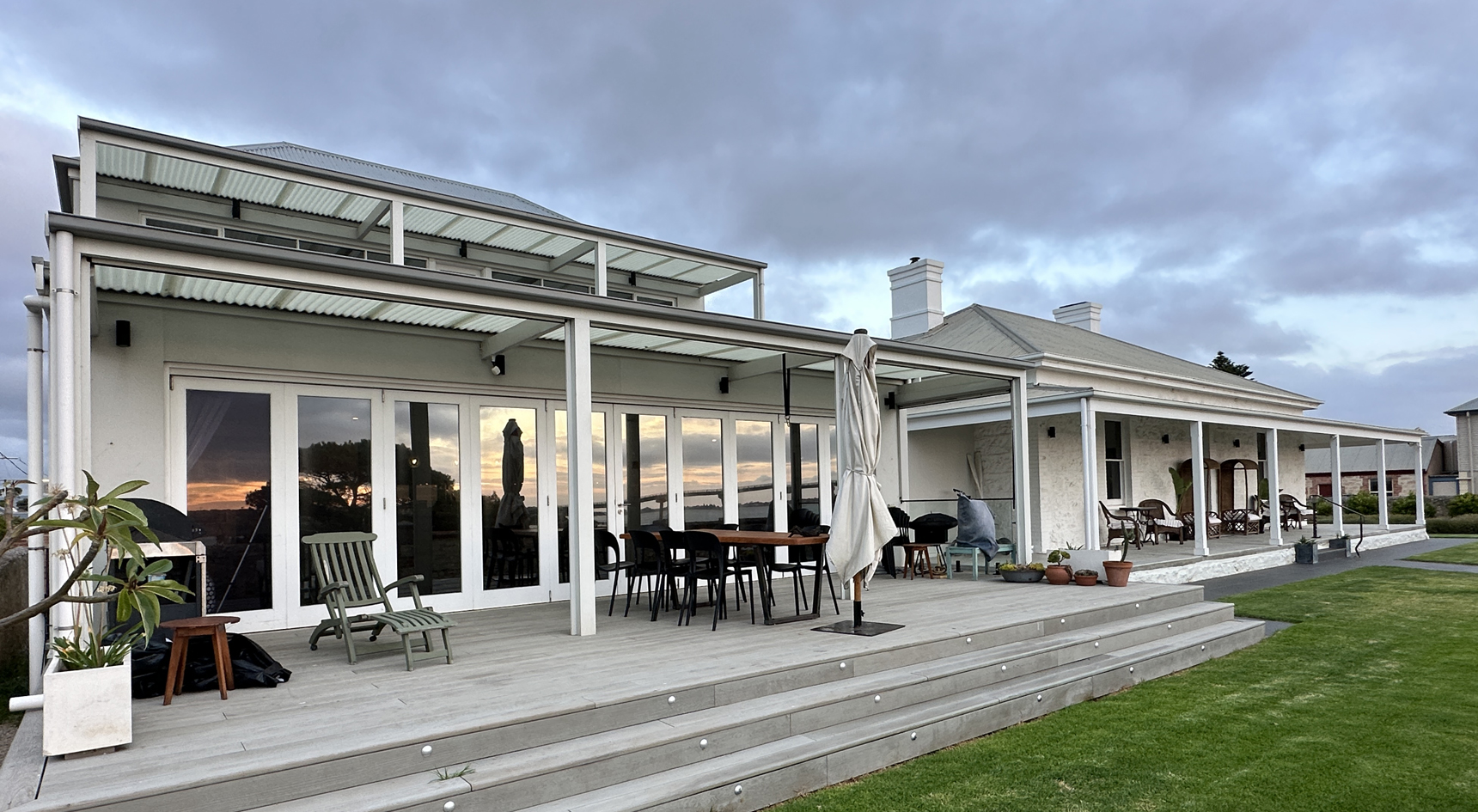
Before I retreat to my beautifully appointed heritage room, I spot a book: River’s End. It was penned by Dr Leslie McLeay, Jamie’s grandmother. Post shower, I tuck into bed, and illuminate its pages with my bedside lamp.

